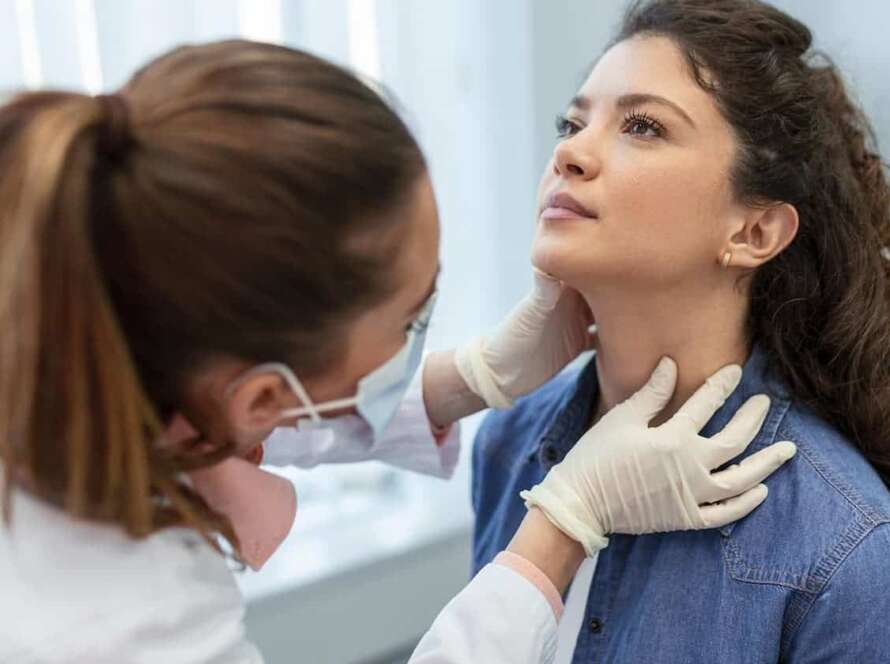Studies show that 3-12 percent of children snore, 15 percent wet the bed at age five, and 11 percent of ages four to seven have ADHD. Obstructive sleep apnea (OSA), characterized by apneic periods due to an underdeveloped airway, is associated with each condition. OSA manifests in bruxism, poor sleeping habits, bedwetting, ADHD, moodiness, an inability to concentrate, and diabetes.
How can you determine if your child is breathing correctly? Let’s discuss the signs and what to do if they aren’t.
The 101 on Airway Development
As sleep and breathing disorders are on the rise, many recent studies have examined why. Why are human beings not developing properly? Why are the orofacial muscles not doing their job?
The answer is western culture. Western culture has changed the way babies receive their food supply and consume their nutrients in the first years of life. Western culture has normalized the soft food diet, limited breastfeeding, and pacifier use.
Weston Price, a famous dental practitioner of the 20s, 30s, and 40s, traveled around the world to study cultures and individuals not exposed to Western civilization, processed foods, white flour, and sugar. What he found was fascinating: Individuals in these areas had broad jaws and fully formed faces. They boasted wide dental arches, naturally straight teeth, and absolutely no tooth decay. He ultimately determined that nutrient-poor foods caused narrow faces, poor nutrient absorption, tooth decay, crowded teeth, misalignment, mouth breathing, and even the development of allergies.
Our society has come to accept dental and breathing issues as common, even normal, but this could not be further from the truth. The same goes for developmental issues, asthma, and learning disabilities. Poor breathing equals poor living. But how do we identify and treat those who are already on this path? Let’s discuss signs your child is struggling to breathe and how to help them.
Signs Your Child Is Struggling to Breathe
The human body is incredible in its ability to adapt and compensate. An excellent example of this is when we suffer from a pulled muscle or torn ligament. Rather than continue on the injured area, our body will adjust our gait to an unnatural position to protect it. Other examples include motor (brain), respiratory (lung), and renal (kidney) compensation.
The point is that our bodies are incredibly intelligent and will do what it takes to survive and thrive in our environment. Many times, we don’t even realize that our body systems are compensating. And when we have a seemingly normal outward appearance, it can be challenging to understand that we’re facing a battle inside. This is especially true in children.
Oftentimes, internal issues in children manifest themselves in other areas of their body, not the source site. By understanding this, we can take a broader approach and examine what the real issue at play is. In the case of respiratory distress, the following signs and symptoms can occur:
- Snoring or audible breathing during sleep
- Apneic periods during sleep that usually result in gasping and restlessness
- Mouth breathing during the day
- Swollen tonsils and adenoids
- A nasal voice
- Daytime fatigue or irritability
- Hyperactivity during the day and other behavioral problems
- Sleepwalking, night terrors, and bedwetting
- Learning problems such as an inability to retain information
- Headaches, especially in the morning hours
If your child suffers from one or more of these signs and symptoms, it’s highly recommended that you discuss these concerns with your airway-trained dentist. They can spot the outward manifestations of breathing disorders and offer the possibility of participating in an at-home sleep test. This is the best way to confirm your suspicions and determine the root cause of your child’s suffering.
How to Help Your Child
If your child is diagnosed with OSA or another condition related to sleep and airway development, don’t fret: It’s not too late to intervene. Modern medicine has come a long way, and revolutionary treatments are on the market that encourage orofacial growth and typically eliminate the need for further intervention, such as braces.
Here are a few notes:
- If your child suffers from allergies or nasal obstruction, treat it early. This is key. Left untreated, it leads to mouth breathing, which is a difficult habit to break. Early treatment will ensure proper nasal breathing.
- Monitor your child’s sleeping position. The best scenario is for them to lay on their back to encourage symmetrical development and enable them to breathe using their full lung capacity.
- Nip thumb sucking and pacifier use in the bud as soon as possible. These change the sucking pattern, put abnormal pressure on the teeth, modify the tongue’s natural position, and almost always lead to malocclusion.
One excellent treatment option for the underdevelopment of the airway and jaw is MyoCorrect, which is “committed to helping and assisting patients to understand and apply techniques to establish neuromuscular changes in the oral and facial muscles.” Essentially, Myocorrect is a program that teaches individuals the proper use of their tongue and facial muscles by using exercises. In addition, individuals may use an oral appliance to help foster positive change.
Some other positive outcomes include the following:
- The reduction or elimination of snoring
- A reduction in allergies, anxiety, headaches, TMJ, and neck and shoulder pain
- Improved posture, speech, and digestion
- Enhanced facial tone
- Attainment of a proper lip seal
- Proper nasal breathing, chewing, and swallowing
- Prevention of many downstream comorbidities
The best place to start is to seek guidance from your Vivos Integrated Provider. In addition to proper diagnosis, they are the gateway to a comprehensive treatment plan. They can consider your specific wants and needs and collaborate with you to determine the best course of action. If you are interested in learning more about MyoCorrect or our services at Vivos Therapeutics, Inc., contact us at our website or by calling (720) 399-9322.
The statements made on this website are for educational purposes and include articles, educational materials, and research on various topics within the Sleep and Dental industries and are not the views of, or are in connection with Vivos Therapeutics and/or its regulated products. The statements are not intended to accompany any required product labeling for a regulated product. Neither are such statements intended to introduce a new indication, patient population, alter the directions for use, or otherwise change or supplement any required labeling for a regulated product.

